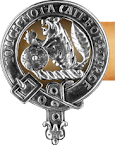I don't usually make two posts in a single day, but I wanted to be sure and post this article received today from "The Ancestry Weekly Journal" and reprinted with their permission.
The article is written by Juliana Smith. Enjoy! [You may want to print this out or take notes!]
Ten Places to Find Immigrant Origins
by Juliana Smith
There’s a unique thrill that comes when we identify an immigrant ancestor in our family tree. Someone long ago, an ancestor who was born in a foreign place, left their home and everything he or she knew. That decision had a huge impact on who we are today. It determines the label we put on ourselves, whether it be American, Canadian, British, or some other nationality. Sherry Irvine’s column on The English in Scotland was a good reminder that these decisions impact people in pretty much every country in the world.
It’s connections like these that the fuel our passion for family history, inspire us to stay up late searching the depths of the Web, schedule vacations around graveyard and courthouse visits, and grill Great-Aunt Madge at the family reunion, seeking that elusive town name in Germany where it all began. (Of course by "grill," I'm speaking figuratively. Don't throw Aunt Madge on the barbie at the family reunion. It will just make her mad and you'll be less likely to get information from her in the future.)
But Madge may not have the answer for you. What then? Here are ten places to look to find that location in the “old world” where our immigrant ancestor made that fateful choice.
1.) Family Correspondence and Memorabilia As with many aspects of family history research, often the best place to start is at home (or Aunt Madge’s home, or Grandpa Joe’s home, etc.). A clue to your ethnic origins may lie in an obvious place like a family Bible, or something not as obvious like a piece of clothing or a piece of lace with a pattern that is native to a particular region. Photographs can hold surprising clues, again, sometimes as obvious as a name on the back as was the case when I identified my paternal great-grandfather’s hometown in Poland, or perhaps in some elements of the photograph like clothing, a sign in the background, the type of housing, or a photographer’s imprint.
2.) Birth Records Locate the birth records of all your immigrant ancestor’s children. While your direct ancestor’s birth record may only include a country of origin (or no information at all), a sibling’s record could include the name of the town or county.
3.) Marriage Records If your ancestor was married in this country find their marriage record. In the U.S., marriage information is available in the 1900, 1910, and 1930 U.S. Federal Censuses, and the 1880 census has a field for those married within the year.
4.) Death Records Death records may also include the birth place of the decedent, and sometimes that of his parents. A 1927 death record for John J. Cullerton of Chicago revealed that his father had been born in County Wexford, Ireland, and his mother was from Queenstown, County Cork, Ireland. John was one of twelve children and although he was not the direct ancestor of the person who was being researched, it was one of those times where whole family research paid off greatly.
5.) Religious Records Where civil records don’t include an immigrant’s exact place of origin or where civil records aren’t available, turn to religious records. I found my great-great-grandmother’s county of origin in Ireland in a book of dispensations for the Catholic Diocese of Brooklyn. From there, Griffith’s Valuation gave us an even more specific location.
6.) GravestonesUnless your ancestors were frugal with engraving costs like mine were, tombstones can be another source of information when it comes to an ancestor’s origins. (Go to the blog for an example of one ancestor’s ever-so-informative headstone. There are seventeen family members in that grave.) Others however, are much more fortunate. In fact, dedicated researchers have compiled entire books on cemetery transcriptions. Two books in my collection focus particularly on graves where place of birth is given. (Old Calvary Cemetery: New Yorkers Carved in Stone, by Rosemary Muscarella Ardolina and Tombstones of the Irish Born: Cemetery of the Holy Cross, Flatbush, Brooklyn, by Joseph M. Silinonte)
7.) Newspapers Newspapers often list the town of origin for the individual mentioned, particularly in obituaries. An obituary in the Brooklyn Eagle listed Balbriggan as the town of origin in Ireland for my third great-grandmother. But don’t overlook other sections of the newspaper. An ancestor’s “misdeeds” may have earned him a spot in the paper and anti-immigrant newspapers may have been all too eager to point out where he or she was from. Notices like the following from the New York Times were also common.
PERSONAL.--Thomas Talbot, formerly of Kilkenny, Ireland, wishes to find his sisters, who are believed to be in this City. Mary, Judy and Margaret were their names, and the first was married to a Mr. Prim of Kilkenny.
8.) Local Histories Local histories often include mentions of groups who immigrated and settled together within the community. Also, family members may be profiled like the following entry from the History of Cook County, Illinois: From the Earliest Period to the Present Time (Chicago: A.T. Andreas, 1884.) which is available at Ancestry.
John S. Forster, florist, was born in Yorkshire, England, February 20, 1851. He came to Chicago in 1871, and after a stay of several weeks went to Wisconsin, where he was engaged in railroad surveying for four years, when he came to Evanston, in 1875, and first worked for W.T. Shepherd, florist, whom he bought out and has since carried it on for himself. Mr. Forster was married to Miss Fredrika Schlucter, of Gosler, Germany, February 14, 1876, in Chicago. They have four children--George H., Annie L., William J., and Charles R.
9.) Naturalization Records, Alien Registrations, and Passports In the U.S., you may find clues to ancestral origins in naturalization records created post-1906 when the former Immigration and Naturalization Service (INS), now the U.S. Citizenship and Immigration Services (USCIS), took over and standardized the forms used in the naturalization process, requiring more personal information. Prior to that time you may find the occasional record with a detailed place of origin, but often only the country is listed. Ancestry has several large databases of naturalization records available.
U.S. Naturalization Records Indexes, 1794-1995
U.S. Naturalization Records - Original Documents, 1795-1972
New York Petitions for Naturalization
Alien registrations are another source. When I requested my great- grandfather’s alien registration from the USCIS, it confirmed the location we had found on the back of the photograph as his town of birth. As I announced on the blog, you will soon be able to request these records online through the USCIS website.
If an ancestor had to travel back home to settle a family estate or visit relatives, he might have requested a passport which could also bear the name of his hometown. Ancestry has a database with images of U.S. passports available to members.
10.) Military Records You’ll often find immigrants serving in the military, so be sure to check for service records. In the British Army WWI Service Records, 1914-1920 I found an entry for Hyman Samuel Baumander that stated that he was from Lodz, Poland-Russia.
What’s Your Immigrant Story?How did you discover an immigrant ancestor’s origins? Share your story with us in the Comments section of the blog.
Juliana Smith has been an editor of Ancestry.com newsletters for more than nine years and is author of The Ancestry Family Historian's Address Book. She has written for Ancestry Magazine and wrote the "Computers and Technology" chapter in The Source: A Guidebook to American Genealogy, rev. 3rd edition. Juliana can be reached by e-mail at Juliana@Ancestry.com, but she regrets that her schedule does not allow her to assist with personal research.
******************************************************
I hope everyone has learned soemthing new from this! I know I have!
Till tomorrow!
cbh
Subscribe to:
Post Comments (Atom)











No comments:
Post a Comment